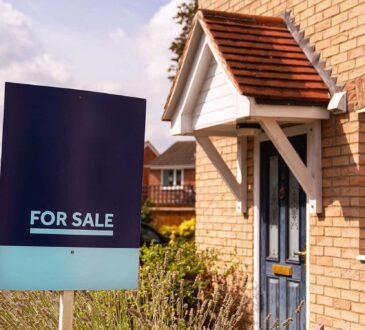
Flats with service charges of less than £1,000 per year are verging on extinction, experts have warned.
At the end of March this year, just 19 per cent of flats had a service charge below £1,000, according to the estate agent Hamptons, down from a third of flats in 2016.
Service charges are used to pay for things like the upkeep of common hallways and gardens, lift repairs and the cost of employing maintenance and concierge staff, if there are any.
The average service charge on a flat in England and Wales stood at a significant £2,247 a year, 31 per cent higher than in the first quarter of 2019.
The service charges that flat owners pay have soared in recent years, up 8.4 per cent or £174 a year between the first three months of 2023 and the first quarter of 2024.
It is twice the rate of inflation and marks the fastest rate of annual growth since the records compiled by estate agents Hamptons began in 2016.
In London, where property prices and service charges tend to be higher, only 14 per cent of flats have an annual service charge below £1,000.
Based in their current trajectory, there are unlikely to be any flats offering a sub £1,000 a year service charge within a decade, according to Hamptons.
Service charges have increased in recent years as the Government begins to clamp down on other freeholder and developer revenue streams such as ground rents.
Service charges are a proven way for investors in property to make money.
With the sector largely unregulated, it is not uncommon for some property managers to invoice for service fees north of 10 per cent to oversee any major works on a development. This can be on top of residents’ annual service charge bills.
There is also the issue of cladding and fire safety that has affected the sector, with some flat owners facing six-figure bills to repair their properties.
The amount that a flat owner pays in service charges tends to increase in line with the additional number of bedrooms their property has.
The Hamptons research found that the service charge for a one-bedroom flat in England and Wales typically stood at £1,940 at the end of the first quarter this year, with three quarters of flat owners paying more than £1,000 a year.
At the same, the average service charge on a two-bedroom flat was £2,311, with 84 per cent paying more than £1,000 a year.
And the average three-bedroom charge stood at £3,044, which is the first time that the annual charge has crossed the £3,000 mark.
Virtually all three-bedroom leaseholders – at 89 per cent – pay more than £1,000 a year.
Taking a look across England and Wales, there are five out of 10 regions with average service charges that are now higher than £2,000 a year.
It is in sharp contrast to five years ago in 2019 when no region had average service charges above this level.
There has been little evidence of service charges being reduced in recent years, with 81 per cent of changes being in an northerly direction.
A total of 5 per cent of leaseholders now pay more than £5,000 a year in service charges.
Can service charges be challenged?
Service charges must be reasonable and can be challenged if you suspect that they are not.
It is worthwhile trying to get support from as many leaseholder neighbours as possible – perhaps even starting a residents’ association.
The Government-funded Leasehold Advisory Service will give free telephone advice to tenants with a lease for over 21 years – although only 15 minutes’ worth.
Where appropriate, seek some quotes for work you think has been over-charged from other contractors, and see if their price is lower than what you paid.
And download the free service charge residential management code issued by the Royal Institution of Chartered Surveyors, which sets out best practice to be followed by landlords and their managing agents.
You can begin challenging service charges with a letter or email to the landlord or managing agents. Scroll down for a template that can be used.
Rising service charges mean buyers are increasingly wary of the additional ongoing cost to their home purchase
The key is to do your research about the service charges on your flat – and preferably before you buy the property.
David Fell, of Hamptons, explains: ‘Rising service charges mean buyers are increasingly wary of the additional ongoing cost to their home purchase and are carefully weighing up the value for money they offer.
‘Higher mortgage rates have already financially squeezed many would-be flat buyers, and with more taking on service charges as well, it’s often limiting how much they are able to borrow from the bank.
‘With buyers going through service charge accounts with an increasingly fine tooth comb, they’re more informed than ever about how much they’ll be paying each month and what they’ll be getting back.
‘This means the value of flats where the service charge is disproportionate to the services on offer has come under downward pressure.
‘Service charges are usually based on forecasted running costs for the year ahead. But inflation has been pushing these costs above what was pencilled in, meaning today’s higher bills reflect inflation which has been running hot for much of the last 18 months.
‘Alongside this, the first generation of city centre flats are now thirty years old and are starting to show their age, often approaching the point when they need an injection of cash.’




